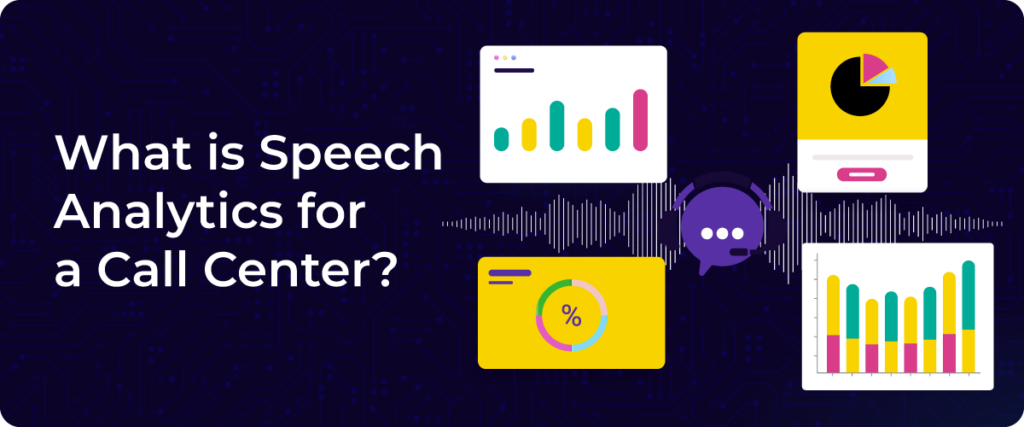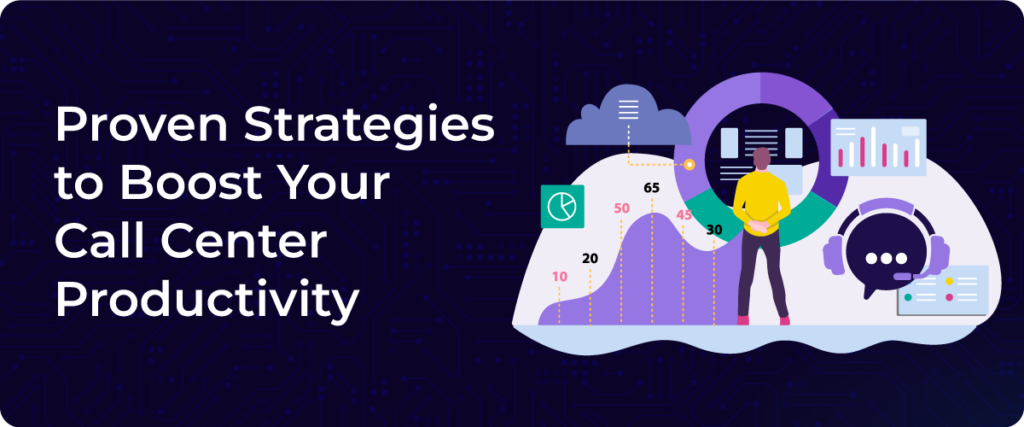
In the fast-paced world of call centers, handling escalated calls is a critical skill that directly impacts customer satisfaction and the overall efficiency of the center. Understanding the meaning of escalation and implementing proactive strategies in an escalation department are essential for a successful call center operation. This article delves into the significance of call center escalations, explores the best practices for handling escalated calls, and defines the concept of escalation in the call center context.
Defining Call Escalation and Its Importance
Escalation refers to the process of transferring a customer’s call or issue to a higher authority or specialized team when it cannot be resolved at the initial contact level. It plays a vital role in ensuring that complex or critical problems receive the attention they require, thereby enhancing customer experience and retention.
The Impact of Call Escalations on Contact Center Metrics
Call escalations have a significant impact on contact center metrics, especially First Call Resolution (FCR) and Average Handle Time (AHT). Unresolved escalations decrease FCR and increase AHT, affecting efficiency and customer satisfaction. Proactive strategies, like having an Escalation Department, using an Escalation Matrix, and training agents in de-escalation techniques, are essential to tackle these challenges effectively and maintain high-performance standards. By prioritizing swift resolution and minimizing escalations, contact centers can deliver exceptional customer experiences and optimize their operations.
Proactive Strategies for Managing Call Escalations
To effectively manage call escalations, proactive strategies are key to minimizing their impact on contact centers. Here are some crucial tactics to handle call escalations proactively:
- Establish Escalation Department: Create a dedicated team with advanced skills and authority to handle complex issues promptly.
- Implement Escalation Matrix: Develop a clear and structured guide for consistent handling of escalated issues.
- De-escalation Techniques Training: Train agents in active listening, empathy, and problem-solving to turn tense situations into positive experiences.
- Collaborate with Specialized Teams: Foster seamless communication between frontline agents and experts for quick issue resolution.
- Regular Agent Feedback and Coaching: Provide constructive feedback to refine agents’ skills in handling escalations.
- Empower Agents with Knowledge: Ensure agents have access to an updated knowledge base for efficient issue resolution.
- Monitor and Analyze Trends: Identify recurring issues to implement preventive measures and improve processes.
- Customer Feedback Mechanisms: Gather insights from customer feedback to guide escalation management improvements.
- Escalation Awareness Training: Educate all staff on when and how to escalate calls for efficient resolutions.
- Continuous Process Improvement: Embrace a culture of ongoing improvement in handling escalations.
The Escalation Department: A Crucial Element in Call Centers
Running a bustling contact center can be challenging, but we’ve got a secret weapon: the Escalations Department! These skilled agents handle complex calls like superheroes – with expertise, empathy, and efficiency. They save the day by resolving tough issues, preventing unnecessary escalations to higher-ups.
You might wonder, why not just escalate everything? Well, these superheroes swoop in to tackle problems swiftly, sparing upper management from every little hiccup.
Armed with deep knowledge and exceptional training, they’re no band-aid fixers. They dig into the root cause and implement real solutions!Customers love knowing top-notch agents have their back. It boosts their confidence, and they know their concerns will be handled with care.
In the contact center machine, the Escalations Department keeps the gears turning smoothly. They step in seamlessly, untangling any knots that come their way.They’re the unsung heroes, saving time, and keeping customers happy. With the Escalations Department on our side, we’re unstoppable!

Understanding The Escalation Matrix
Picture the Escalation Matrix as a well-organized roadmap guiding agents through the twists and turns of the escalation process. It’s like having a GPS for handling complex customer issues in the most efficient and effective way possible.
So, what exactly is the Escalation Matrix made of? Let’s break it down:
- Escalation Levels: The matrix outlines the different levels of escalation within the organization. It starts with the frontline agents, then moves up through various tiers, each with increasing expertise and decision-making authority.
- Issue Categorization: It categorizes the types of issues that may arise, classifying them based on complexity and severity. This ensures that each escalation is directed to the right level for resolution.
- Responsibilities at Each Level: The Escalation Matrix clarifies the responsibilities of each escalation level. Agents know when to handle issues themselves, when to involve supervisors, and when to escalate further up the hierarchy.
- Communication Channels: It specifies the preferred communication channels for each level of escalation. This ensures smooth and timely transfer of information, preventing delays in resolving customer concerns.
- Escalation Timeframes: The matrix sets clear timeframes for each escalation level. This helps agents prioritize and manage their workload effectively, preventing issues from languishing unresolved.
- Feedback and Reporting: It includes provisions for feedback and reporting. Agents can provide insights on recurring issues, allowing the organization to identify trends and implement improvements proactively.
Now, how does the Escalation Matrix streamline the escalation process?
First and foremost, it eliminates confusion and uncertainty. Agents know exactly what steps to take and whom to involve when facing a challenging issue. This clarity empowers them to act swiftly and confidently, minimizing the time it takes to resolve customer concerns.
The matrix also prevents unnecessary escalations to higher management levels. By routing issues through the appropriate channels, it ensures that more complex problems receive the attention they require without overwhelming senior leadership.
Moreover, the Escalation Matrix facilitates collaboration among different departments and teams. When an issue reaches the appropriate escalation level, it’s seamlessly handed off to experts who can address it effectively. This seamless collaboration leads to faster resolutions and a more cohesive customer experience.
In the long run, the Escalation Matrix fosters a culture of continuous improvement. By analyzing feedback and reporting data, organizations can identify areas for enhancement and optimize the escalation process further.
Overall, the Escalation Matrix is the backbone of a well-organized escalation management system. It empowers agents, streamlines communication, and ensures that customer issues are resolved with the utmost care and efficiency. With this powerful tool at their disposal, contact centers can provide exceptional customer experiences and build lasting relationships with their clientele.

Best Practices for Handling Escalated Calls And Customers:
- Active Listening: One of the fundamental techniques for handling escalated calls is active listening. Agents must give their full attention to the customer, understand their concerns, and acknowledge their emotions to build trust and rapport.
- Empathy and Understanding: Demonstrating empathy is crucial when dealing with escalated calls. Customers want to feel heard and understood, so agents should put themselves in the customer’s shoes to offer genuine support.
- Remain Calm and Professional: Escalated calls can be emotionally charged, but it’s essential for agents to remain calm and professional throughout the conversation. A composed demeanor can help de-escalate the situation.
- Take Ownership: Even if the initial problem was not caused by the agent, taking ownership of the issue and its resolution shows the customer that their concerns are valued.
- Collaborate with Specialized Teams: When necessary, escalate the call to specialized teams or higher management. Effective collaboration ensures timely resolutions and prevents unnecessary delays.
- Offer Solutions, Not Excuses: Customers seek solutions, not excuses. Agents should focus on finding viable resolutions and communicate them clearly to the customer.
- Follow Up: After resolving the escalated issue, follow up with the customer to ensure their satisfaction and to show that their concerns are genuinely cared for.
Handling Threats from Customers – Solutions, Not Struggles!
In the world of customer service, we sometimes face threats, but we’ve got a powerful approach. We focus on solutions, not the threats themselves. Remaining calm and empathetic, we listen actively, understand their concerns, and work towards resolutions. By staying professional and involving the right resources, we can turn challenging moments into opportunities for customer satisfaction. With our superhero-like tactics, we’ll handle threats with grace and leave a positive impact on our contact center’s reputation. Let’s conquer any challenges that come our way!
Reducing Call Escalations – Our Strategic Power Moves!
Let’s dive into the world of strategic decisions that can work wonders in minimizing call escalations. We’ve got a three-pronged approach that’s like having a superpower at our fingertips!
- Contact Center AI: Picture this – an intelligent ally by our side, ready to assist our agents in resolving customer issues. Contact Center AI is a game-changer! It can analyze customer queries, provide relevant information, and even suggest solutions. By harnessing the power of AI, we empower our agents to handle calls with greater confidence and accuracy, reducing the need for escalations.
- Updating the Internal Knowledge Base: Knowledge is power, and a well-updated Internal Knowledge Base is our secret weapon! Keeping it current with the latest information, insights, and solutions empowers our agents to become masters of knowledge. When armed with the right information, they can handle customer concerns swiftly and effectively, without the need to escalate to higher levels.
- Identifying Redundant Workflows: It’s time to declutter and streamline! By identifying redundant workflows, we cut down on unnecessary complexities that can lead to escalations. Streamlining processes ensures smoother operations and helps our agents focus on what really matters – delivering exceptional customer experiences.
In the world of call centers, handling escalated calls is a critical aspect of providing exceptional customer service. Understanding the concept of escalation and its significance, along with implementing best practices, can empower call center agents to excel in their roles. By establishing an escalation department and equipping agents with de-escalation techniques, call centers can enhance efficiency, boost customer satisfaction, and build lasting relationships with their clientele.
Unleash Your Contact Center’s Potential Today! 👉 Get Started with ConvoZen.AI and Elevate Customer Experience.



Call center agents are multitasking pros! Managing calls, resolving issues, and keeping customers happy is no small feat!